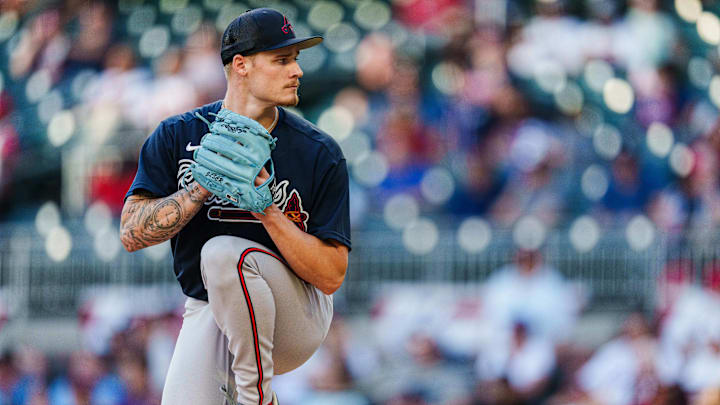
4:Spencer Schwellenbach RHP 23 – RHP A+ BA:5 BP:5 OFFR: 4
Schwellenbach is the first of the big arms on the list. He had UCL replacement surgery after the Atlanta Braves selected him and didn’t pitch until this season.
He features a four-pitch mix led by a 94-96 mph fastball that touched 98 but lacks movement, a firm slider that can look more like a cutter that sits 85-89 and was a weapon for him this year, a curve with good depth that creates swing-and-miss in the mid to low 80s, and a middle of the road changeup.
The Braves moved him from the pen to a starting role where his stuff dominated at both levels of A-ball this year. He’s always been a strike thrower, but he wasn’t a strike out as many batters as his stuff indicates he might, and his walk rate jumped a bit, but he did force a 51% ground ball rate with Augusta.
While his elbow held up well, and his velocity returned after surgery, he did miss time with shoulder soreness after the Futures Game. That’s understandable after nearly two years away from competitive pitching but remains something to watch.
I expect the Braves to continue to use him as a starter, but a ninth-inning bullpen role isn’t out of the question.
FV 50 Back-end starter with some upside and a decent relief fallback
3: Owen Murphy RHP 20 – BA:4 BP:2 OFFR: 3
When the Atlanta Braves drafted Murphy, he featured a high 90s fastball. This season, it’s more 90-93 but averaged over 19 inches of induced vertical break that caused a ton of swing and miss at the top of the zone (68% strikes). He backs the heater up with an improved low-80s Luke Jacksonesque slider (71% strikes) and a mid-70s curveball with high spin rates.
The OFFR pointed out that he can be frustrating to watch at times.
“…he will go through stretches where he appears dominant, then lose his release point or his concentration and allow runs in bunches…in his next start he’ll take a no-hitter in the 7th.”
I’d call that normal at this stage of his development; he plays at 20 next year and probably still has fond memories of his senior prom.
FV BA:50 BP:55 Murphy projects as a number three or four starter with upside.
